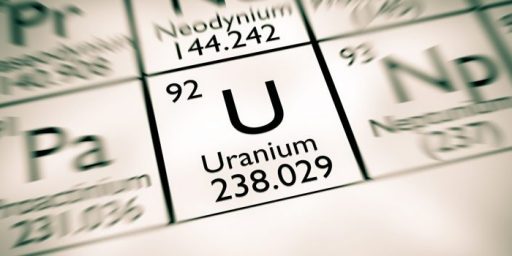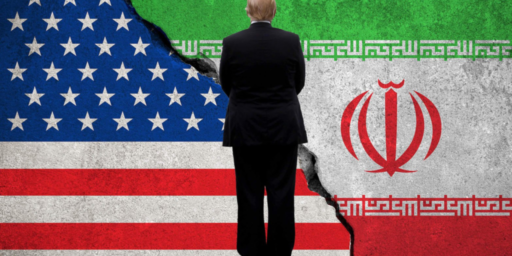Iran Discovers New Uranium Deposits
Iran claims to have found more domestic uranium deposits.
The deputy chief for nuclear research and technology, Mohammad Ghannadi, said Iran had found at least three new uranium deposits in central Iran and was working toward mining them. “We have got good news: the discovery of new uranium mines in central Iran,” Ghannadi told a conference Tuesday.
I don’t know whether this is truthful and lack the technical expertise to evaluate what impact this would have on Iran’s ability to build a nuclear device. This can’t be “good news,” though, from a perspective other than Iran’s.





Not a big deal, as the availability of Uranium ore is not Iran’s critical link in making a nuclear bomb; they already have sufficient ore sources to make bombs. If anything, this announcement is more useful to them for the long term production of nuclear energy for electricity, which requires more ore.
This is probably a knowledge or translation issue, but one does not find a “Uranium mine,” one discovers a Uranium deposit (unless someone hid a mine on them). One then builds a mine to extract the ore, called pitchblende. Uranium is not particularly rare, and is much more plentiful than gold. The problem is in the extraction and refining, not in finding the ore.
Next comes the enrichment, which is separating out the desired isotopes (
Next comes the enrichment, which is separating out the desired isotopes (under 1%) from the 99% that is U-238, and chemically the same as the rest of the Uranium. This is the most technically challenging part. Enrichment to power-grade Uranium is much simpler than for bombs (HEU – Highly Enriched Uranium), roughly 3% vs 90% pure U-235, and the process is more difficult (squared function or greater) as the enrichment goes up. This takes huge quantities of electricity to separate, electricity that Iran already has a shortage of for regular use.
Dispatch Joe to check it out, we all know he is “qualified”
I thought the fission part was the most complicated. TV says it is, so why not skip the nuclear reaction and just go with the fission?
I thought the fission part was the most complicated. TV says it is, so why not skip the nuclear reaction and just go with the fission?
U-235 is the stuff that goes boom, fission is the reaction that occurs and results in the boom. Uranium is the fuel for fission. Creating the device that will make the uranium was once more difficult, but the knowledge is becoming increasingly available, so now it’s hard to distinguish which is more difficult – because both are becoming more easy.
Indeed, I perhaps wasn’t clear, there are two issues here, the first is producing enough Highly Enriched Uranium (HEU) to make a bomb, and the other is to make the bomb so that it goes boom. The first is a massive manufacturing infrastructure issue, which is what I hope Iran is lacking. The second is a technology issue that was solved over 50 years ago, before modern computers and integrated circuits, and I think there are enough bright folks in Iran to figure it out.